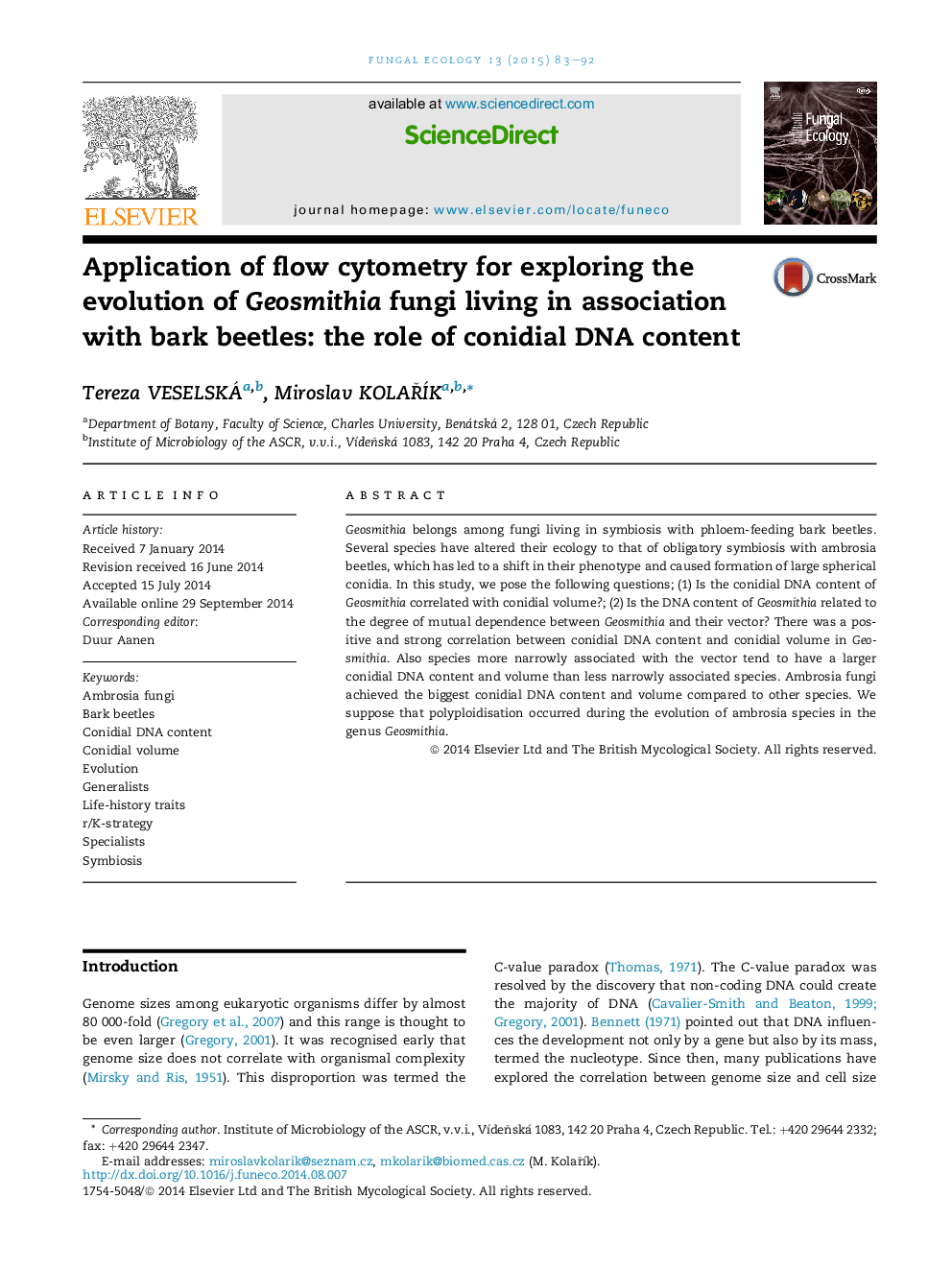| کد مقاله | کد نشریه | سال انتشار | مقاله انگلیسی | نسخه تمام متن |
|---|---|---|---|---|
| 2053541 | 1543651 | 2015 | 10 صفحه PDF | دانلود رایگان |

• Conidial DNA content of Geosmithia fungi was measured using flow cytometry.
• Conidial DNA content is positively correlated with conidial volume.
• DNA content is related to the degree of mutual Geosmithia-insect vector dependence.
• Polyploidisation occurred during the evolution of ambrosia species in Geosmithia.
Geosmithia belongs among fungi living in symbiosis with phloem-feeding bark beetles. Several species have altered their ecology to that of obligatory symbiosis with ambrosia beetles, which has led to a shift in their phenotype and caused formation of large spherical conidia. In this study, we pose the following questions; (1) Is the conidial DNA content of Geosmithia correlated with conidial volume?; (2) Is the DNA content of Geosmithia related to the degree of mutual dependence between Geosmithia and their vector? There was a positive and strong correlation between conidial DNA content and conidial volume in Geosmithia. Also species more narrowly associated with the vector tend to have a larger conidial DNA content and volume than less narrowly associated species. Ambrosia fungi achieved the biggest conidial DNA content and volume compared to other species. We suppose that polyploidisation occurred during the evolution of ambrosia species in the genus Geosmithia.
Journal: Fungal Ecology - Volume 13, February 2015, Pages 83–92